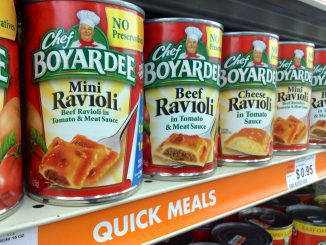
Facing the likelihood of two unpopular presidential candidates, the 2016 general election is shaping up to be both nasty and exciting. Historically, the political right in America has had a visceral reaction to the Clintons, but the possible hatred for Donald Trump could reach new heights in modern American politics.
While Republicans and the political right are experiencing deep divisions over Trump’s ascent, it’s conceivable those fractures could be overshadowed and swallowed up by the left. Many pundits, for good reason, believe Trump has little hope to win a general election. If the electoral map does not bode well for the billionaire, maybe his haters can help his poll numbers.
While Trump may be a long way off from cobbling together the kind of “Silent Majority” voters that propelled Richard Nixon to the White House, a radicalized opposition to some of his more sane and moderate proposals might create a backlash healing some of the divisions on the right.
The more aggressive Trump protestors first emerged on a national scale in Chicago in March. Protestors and Trump proponents broke out in mild scuffles, or at least mild compared to what might emerge for a raucous general election.
The billionaire candidate capitalized on the violence by cancelling his rally, which only served to create sympathy among many free-speech advocates and against those, many spilling over from college campuses, committed to stifling “offensive” speech. In California in April, Trump protestors, many who identified themselves as illegal immigrants, harassed his supporters, damaged police cars, and blocked intersections. Of course, Trump proponents have made their own noise right here in North Carolina, when an older man from Linden received international attention for punching an unruly protestor on camera.
It’s hard to take Trump seriously at times, but he’s tapped into a segment of the nation that feels deeply alienated and disconnected from their government. As Trump emerges as the nominee of the Republican Party in Cleveland, it’s likely that disaffected and grievance groups on the political left will only ratchet up their attacks. It’s not inconceivable to see a repeat of the violence that swept up the Chicago Democratic National Convention in 1968.
Many of these professional “activists” do not need much of a reason to protest, and the mere mention of Trump easily validates their attraction to civil unrest. And like former presidential candidate George Wallace, Trump likes to mix it up with protestors in a way that appeals to the blue-collar worker who generally despises the radical protestors.
Anti-Trump signs at rallies are notoriously vulgar, far more than even Trump himself. He’s routinely called a Nazi, threatened with decapitation, and depicted as a Klansman. Often, these are some of the least offensive signs when compared to the crude sexual humor hurled at the GOP nominee-in-waiting. Hatred and vulgarity in the name of love and tolerance may make sense to large swaths of the political class and punditry, but still appear backward to millions.
Attempts to shut down Trump rallies and foment violence will completely backfire on those truly seeking to stop his candidacy. Trump understands optics and television and has so far defied almost all the political odds and expert punditry. He has harnessed free media unlike any previous candidate and built upon President Obama’s ability to capture the disaffected unlike most of the GOP field, which has now disintegrated.
For all his faults, Trump knows how to capitalize on attacks and frame a message for those dissatisfied with the direction of the country. His uncouthness aside, he’s at least offering to many the ability to rethink the rot which is political correctness. Even if Trump were to lose, not giving him a fair shot during the campaign would be disastrous. He has millions of supporters and voters who feel like they have nowhere else to turn. Silencing his message means silencing millions of Americans.



